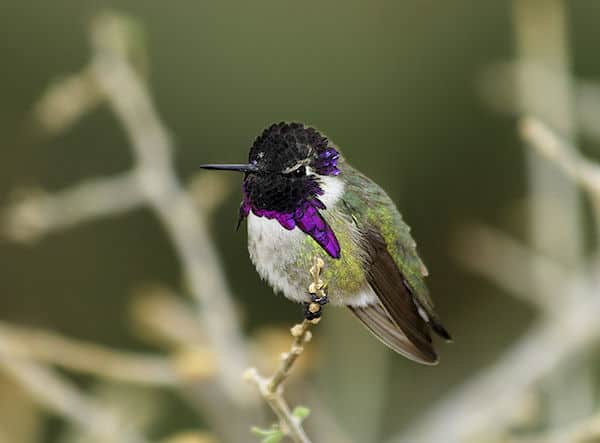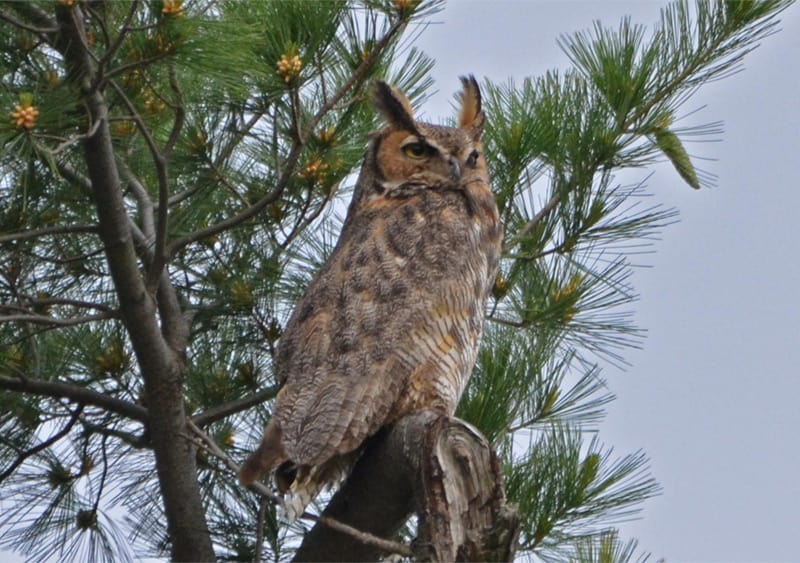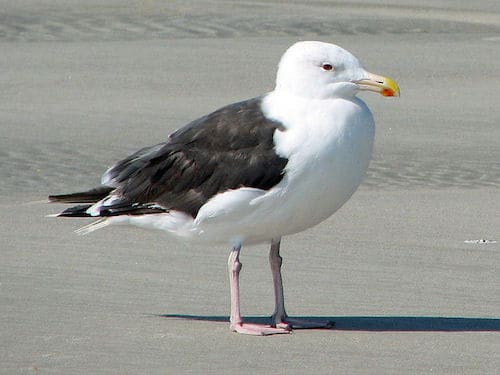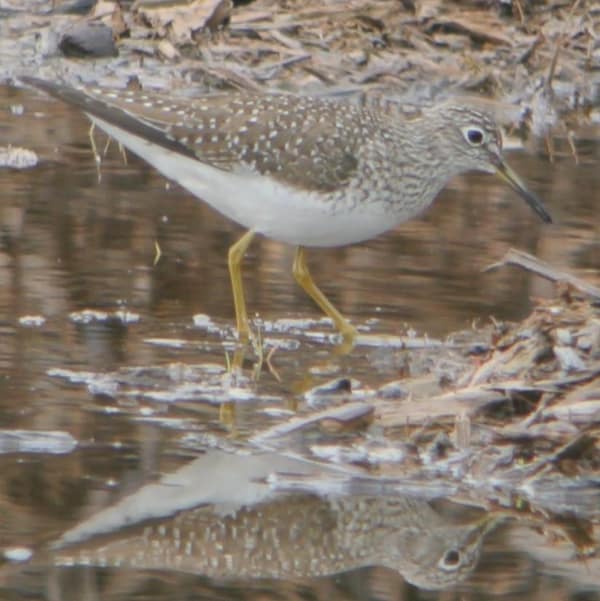The hottest, most arid deserts of southern California and Arizona are home to the 3 ½-inch Costa’s hummingbird. Both the gorget and crown of the male blaze vibrant purple. A high-pitched tik often reveals the presence of territorial bird guarding his patch of blossoms. Female coloring of gray and green is more somber. Ocotillo, desert willow, and tree tobacco are important sources of nectar.
To hold their territories, males employ a series of impressive dives, accompanied by a shrill, prolonged vocalization. A smaller, more intimate, side-to-side flight is also part of the ritual as well. Winter rains bring abundant flowers to the desert in February and March, creating the appropriate habitat for breeding.
Nest sites can be in a wide variety of trees, shrubs, cacti, or weeds. Females are not shy about building around human habitations and they may use a much more varied selection of materials than most other species. Plant down, strips of bark, bud scales, lichens, and string make up the body of the structure, bound by spider webs as with other kinds of hummingbirds. Tiny feathers often cushion the interior.
Costa’s hummingbirds are not strongly migratory, but because the nesting habitat is rather ephemeral, they depart the deserts after the young are independent. These movements are not well understood, but during summer, the birds can be numerous at higher elevations.




